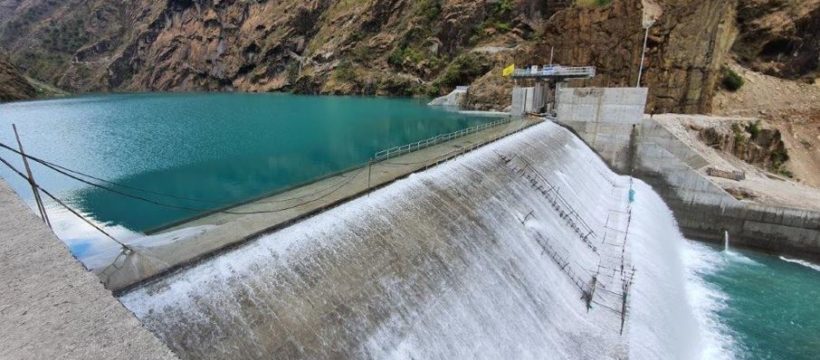Green energy in abundance: Adding 456 MW of commercial production from the Upper Tamakoshi hydropower plant to the national grid enables Nepal to generate an energy surplus during the wet season. The Tractebel experts took over the implementation planning and construction management.
The Upper Tamakoshi Hydroelectric Project (UTKHEP) is a prestigious milestone in the energy transition in Nepal. The plant is located in a remote region of the upper Himalayas on the Tamakoshi River basin, about six kilometers from the border with Tibet. With a natural head of 822 m and six underground units, it produces up to 2,281 GWh of electricity annually. This renewable energy will improve living conditions and promote economic development in the country.
All six turbines and generators have been in full operation since September 2021. During the rainy season, the total electricity generation of Nepal will exceed what the population and the economy are currently consuming. The whole country can benefit in several ways from the surplus of electricity: Electricity costs will decrease and there are plans to supply consumers in need with electricity free of charge. In addition, Nepal could export electricity.
Expansion considered
The Nepal Electricity Authority, Nepal Telecom, Citizens Investment Trust and Rastriya Beema Sansthan are the promoters of Upper Tamakoshi Hydropower Limited (UTKHPL). The general public has also made a huge investment through the company’s initial public offering (IPO). The UTKHPL, executing agency of the plant, is considering a second expansion stage, the Rolwaling Khola Hydroelectric Project (RKHEP) with an installed capacity of 20 MW. In addition to the 2,281 GWh annual energy from the UTKHEP, another 105 GWh would come from this new power plant.
Since 2011, the hydropower experts have been responsible for the implementation planning and construction management of the project, in cooperation with partners. The Tractebel experts were involved in monitoring and planning as well as in construction contract management. They reviewed the design of the transmission line and inspected the construction activities for all structures. Despite the difficult terrain and major damage to the construction sites caused by the severe earthquake of 2015, the project team has rigorously followed its objective of meeting completion deadlines.
“Hydroelectric energy is one of the sustainable renewable energies with low-carbon emissions. The use of hydropower as the main source of energy for everyday activities will help to noticeably reduce fossil fuel carbon emissions in Nepal”, says Swochhendra Rokka, Project Coordinator.
Company Information
As one of the world’s largest engineering companies, Tractebel offers pioneering strategies for a climate-neutral future. Around 5,000 employees develop engineering solutions for complex projects in the fields of energy, water and urban infrastructure. Tractebel customers benefit from 150 years of experience and the local know-how of experts in Europe, Africa, Asia, the Middle East and Latin America. Revenue generated in 2019 was € 671 million. Tractebel is part of the ENGIE Group, an international low-carbon energy and services company.
Contact
Tractebel Engineering GmbH
Sabine Wulf, Head of Communications & CSR
Friedberger Straße 173
D-61118 Bad Vilbel
Phone: +49 (61 01) 55 – 0
info-de@tractebel.engie.com

